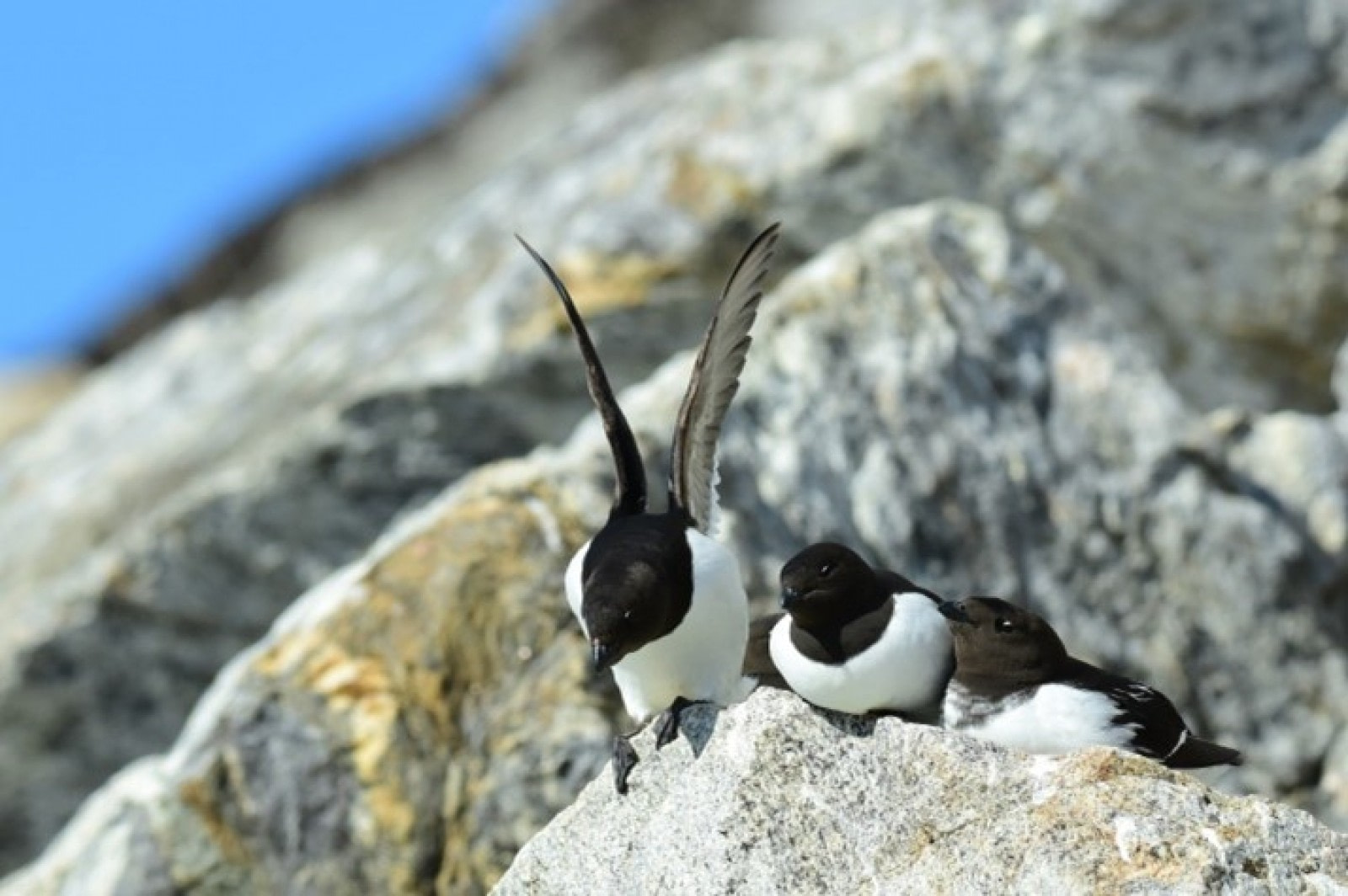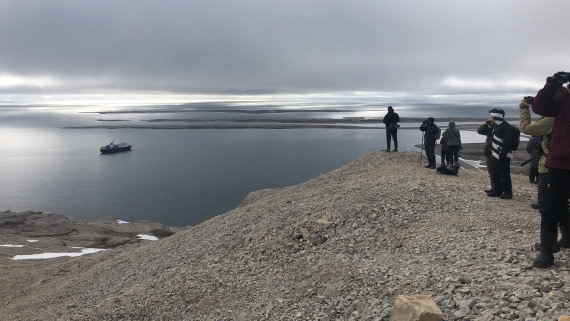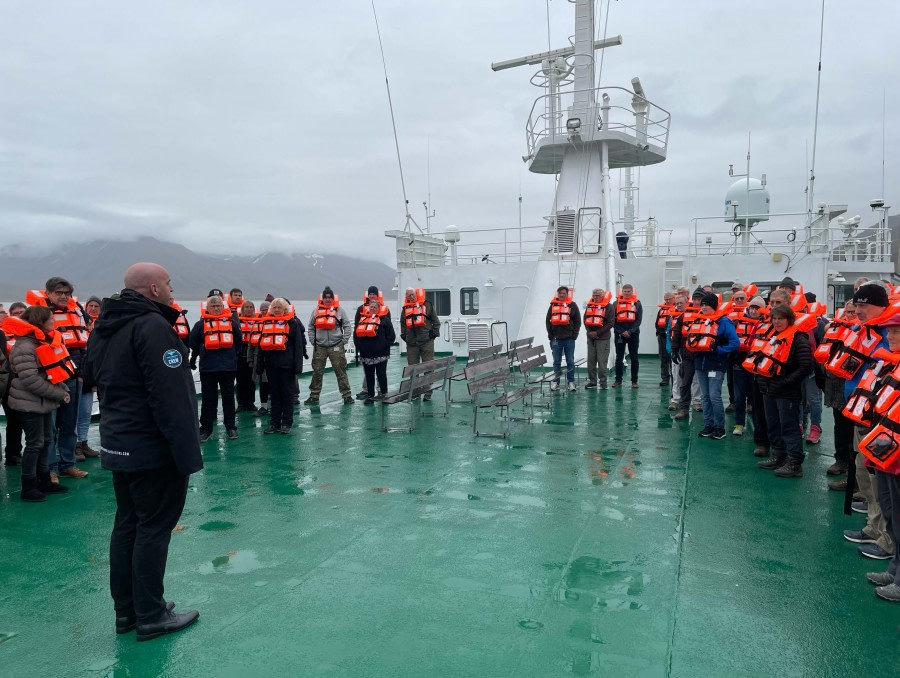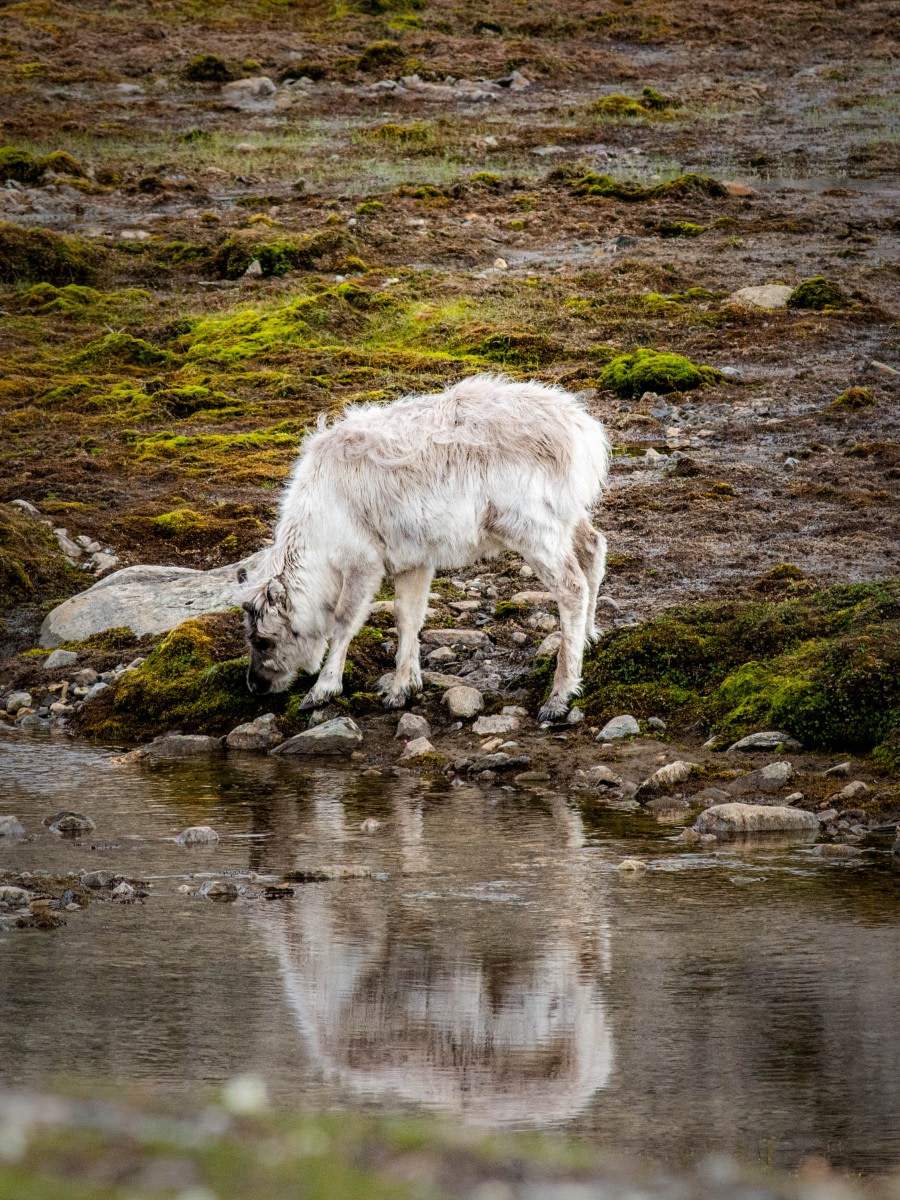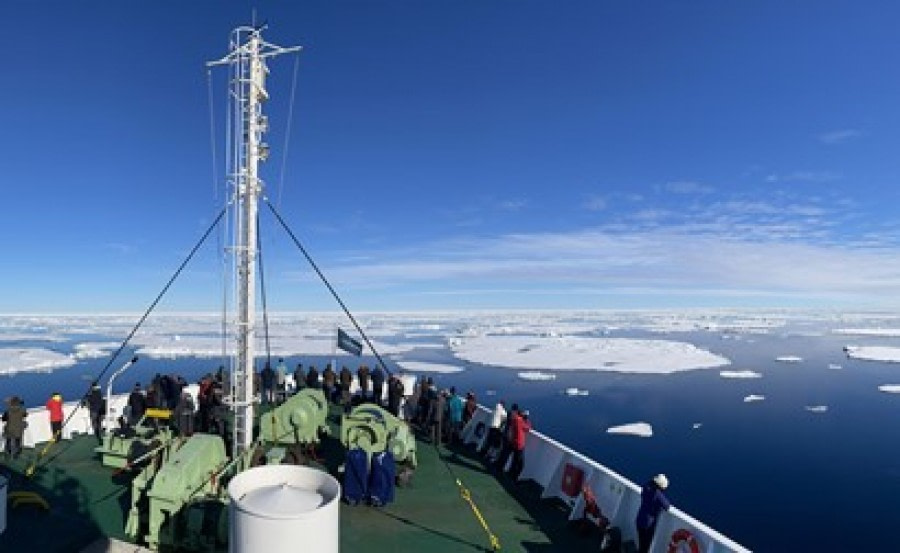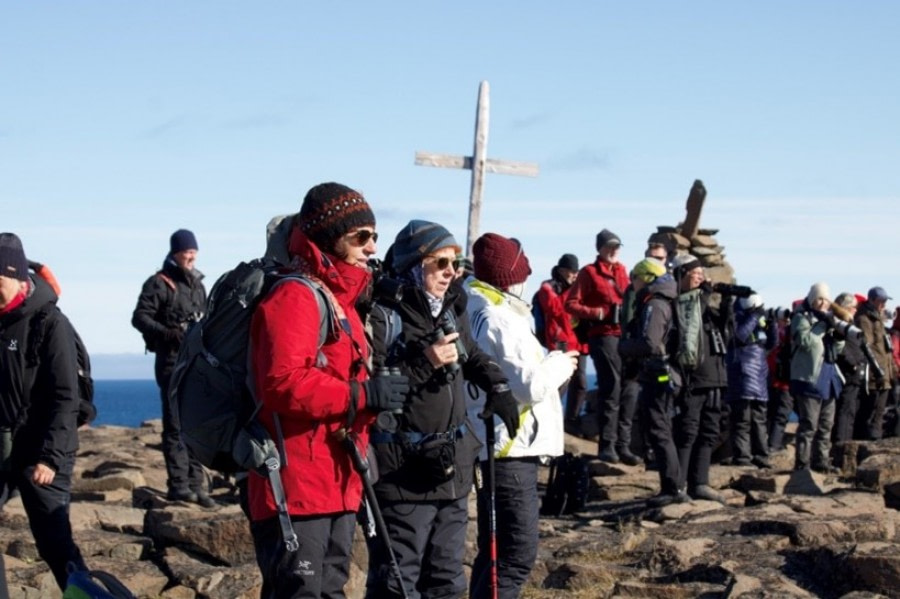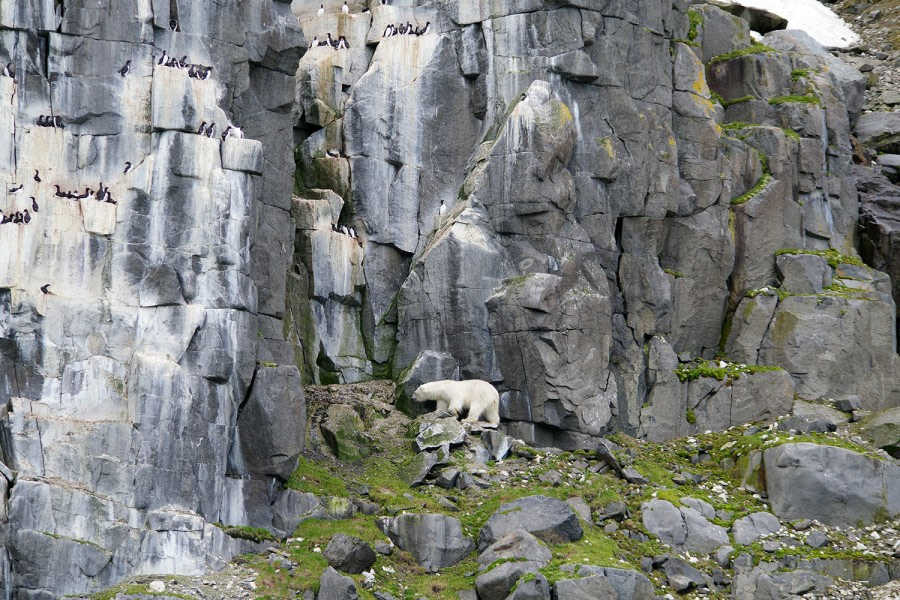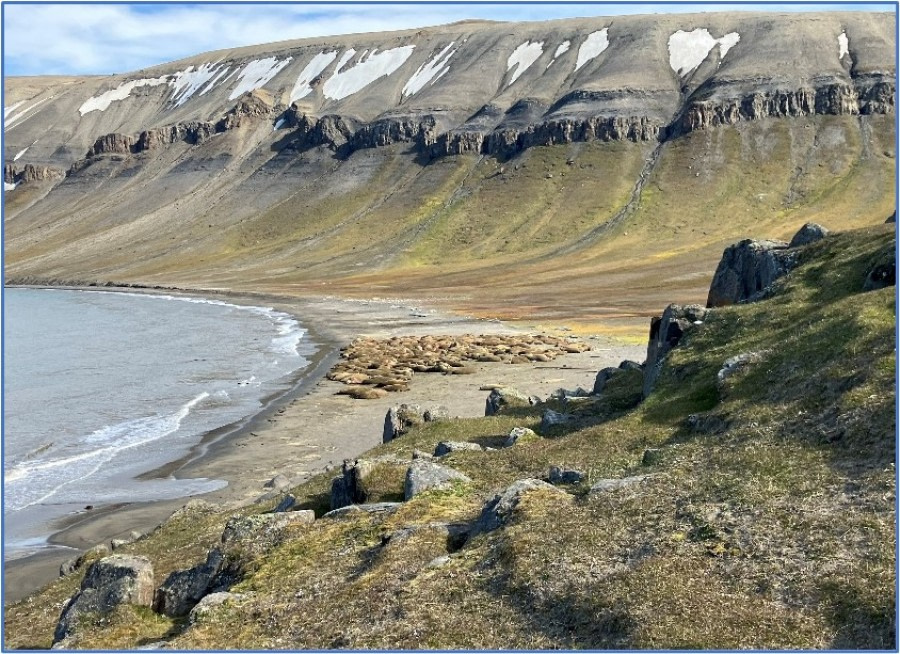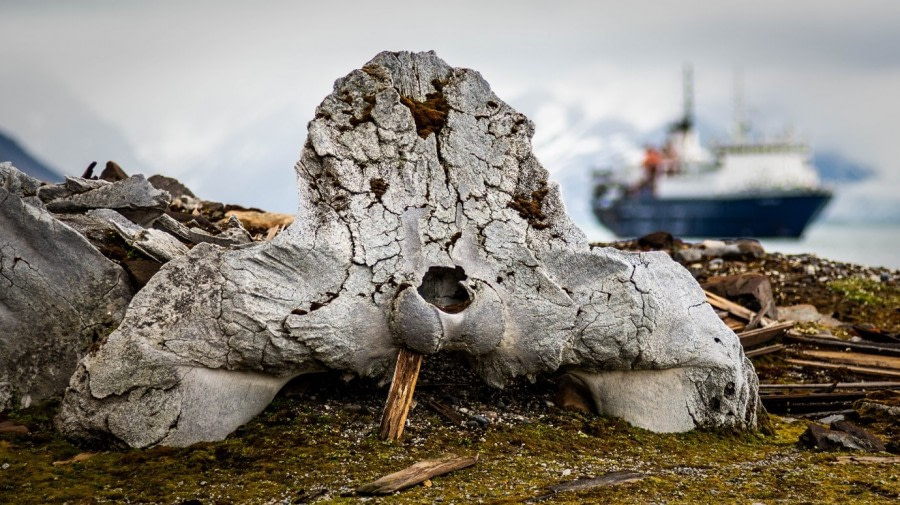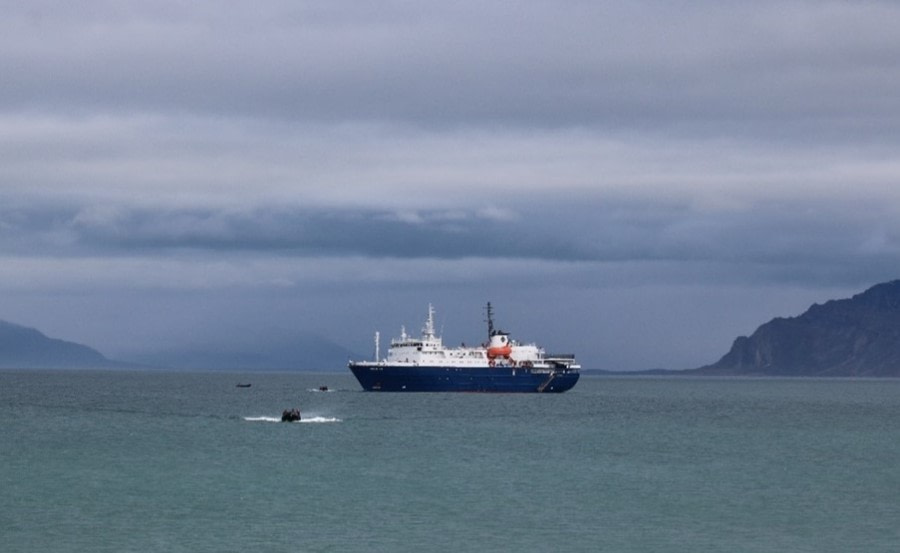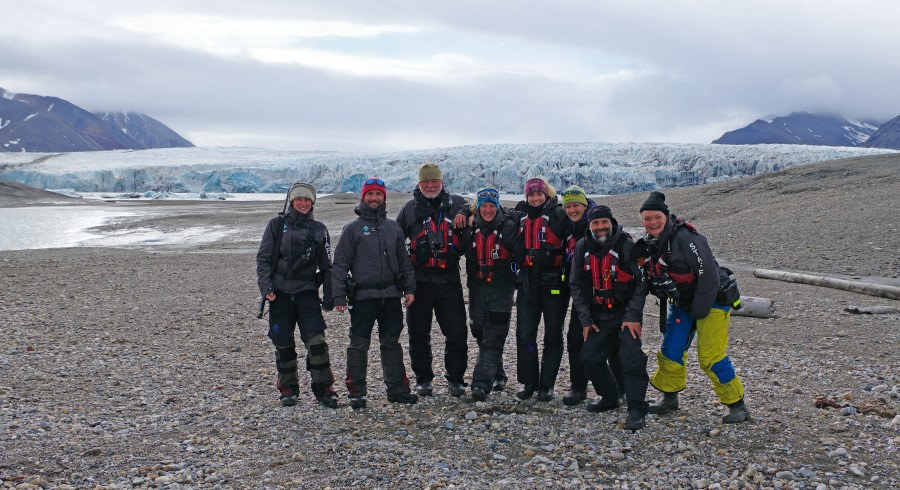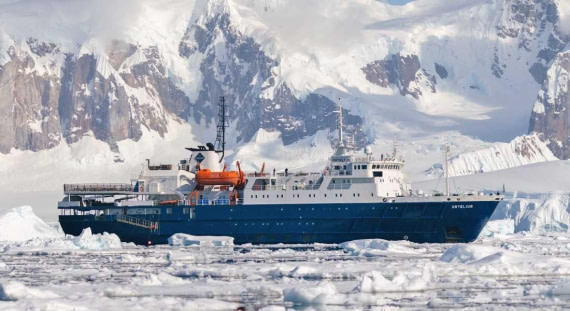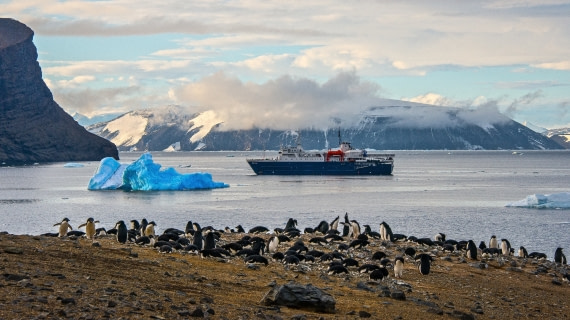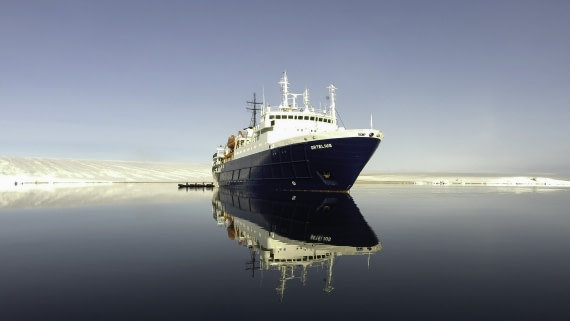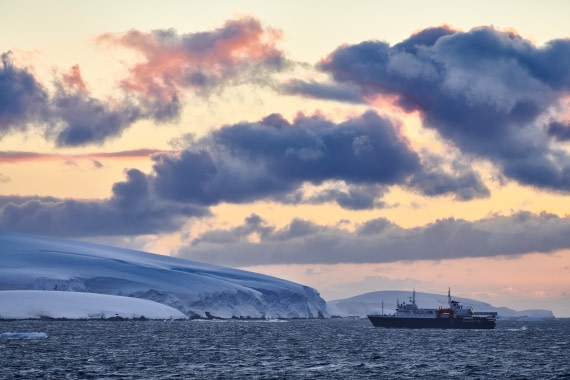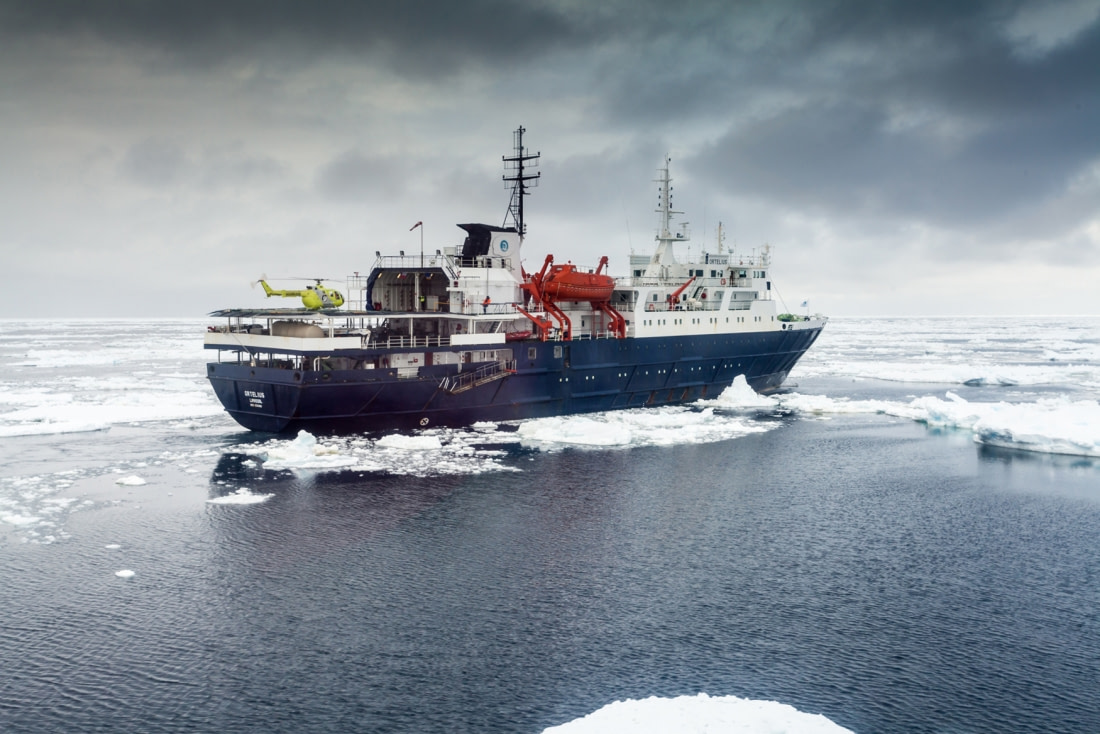| Date: |
06.07.2022 |
| Position: |
79°50.8‘N, 011°23.1‘E |
| Wind: |
NE4 |
| Weather: |
partly cloudy |
| Air Temperature: |
+7 |
Our morning starts off beautifully. The sun is out, a chilly breeze is blowing, but the ocean is relatively calm, which is exactly what we need for our morning landing at Fuglesongen. The name of our destination means “Bird Song”, referring to the Little Auk colony on this island. The size of the colony here may be in the order of several tens of thousands of breeding pairs. In contrast to all other birds in Spitsbergen, Litte Auks have their nests under large boulders on steep scree slopes, which are very often inaccessible. In Fuglesongen the colony is relatively accessible, although the landing itself is on a steep beach with large, slippery boulders, which is making the terrain very difficult for walking. All of us need some support from one another to make our way up the slope and we have to be extremely careful not to fall or twist an ankle.
Fortunately, the terrain becomes easier due to the soft moss beds at the bottom of the Little Auk colony. We have to climb some massive boulders to find a spot on the edge of the colony, but when we find a good spot to sit down, and remain silent and still, it is absolutely incredible how close we can get to the little birds. Many thousands of birds together are responsible for a remarkable level of noise and their shrieking calls are hilarious to listen to. Observing their behaviour and witnessing the large flocks swarming in and out, makes for a sight to behold. Nature always calls for us to slow down and be present. Having the opportunity to be immersed so intimately in the world of these little birds is wonderful and humbling, also for those among us that are not keen bird watchers.
After approximately 1-1.5 hour at the colony, we make our way back to the landing site and with the low tide and very slippery rocks need some time to get everyone onboard the zodiacs in a safe manner. But we all make it back to the ship in one piece, tired yet grateful.
During lunch the Ortelius repositions only a short distance to anchor in a more protected area on the South side of Indre NorskØya and Ytre NorskØya, where we are planning for a zodiac cruise in the afternoon in search of wildlife. Unfortunately the wind is picking up and the swell that is rolling in from the open ocean increases in height, which makes a safe and comfortable zodiac cruise no longer possible. As some of the zodiacs are lowered already, the expedition team decides to scout for a calmer and more suitable landing place instead. But unfortunately they can’t find one and Christoph needs to cancel our afternoons’ excursion. Every downside has an upside however, as this means that we are able to make headway towards Moffen Island and the pack ice further North for the following day.
At the end of the afternoon, before reaching Moffen the expedition team delivers a long recap to enrich us with extra information on some of the sights we have seen over the past days. Barbara gives us interesting information on some of the smallest creatures in the Arctic ecosystem; comb jellies. Then Sasha tells us about ‘his’ King of the Arctic, the Svalbard reindeer. Laura gives us tips on how to enjoy the Arctic to the fullest. And Charlotte finishes up with some more detailed information on the wonderful little auks we saw in the morning.
When recap is finished and we all make it to the bridge and outer decks, Moffen Island comes into sight. It is an unusual little island, only 4-5 square kilometres, completely flat and is home to one of the best-known walrus colonies in Svalbard, that find ideal feeding grounds on the shallow sea bottom around Moffen. The island has been declared a nature reserve, which means we have to keep a minimum distance of 300 meters from the shore line. Besides the walruses, arctic terns are breeding in large numbers, together with a few pairs of Sabine’s gulls that are extremely rare in Spitsbergen. Moffen was the first place on the north coast of Spitsbergen to be re-colonised by Walruses after their near-extinction through several centuries of intense hunting, so to see more than hundred animals lying on the beach and in the shallow waters near shore is a very promising sight. The light is beautiful and we enjoy the view on the island and the walruses from the ship for some time, before we continue our journey to the sea ice. Our hospitality crew and another wonderful dinner await us.
